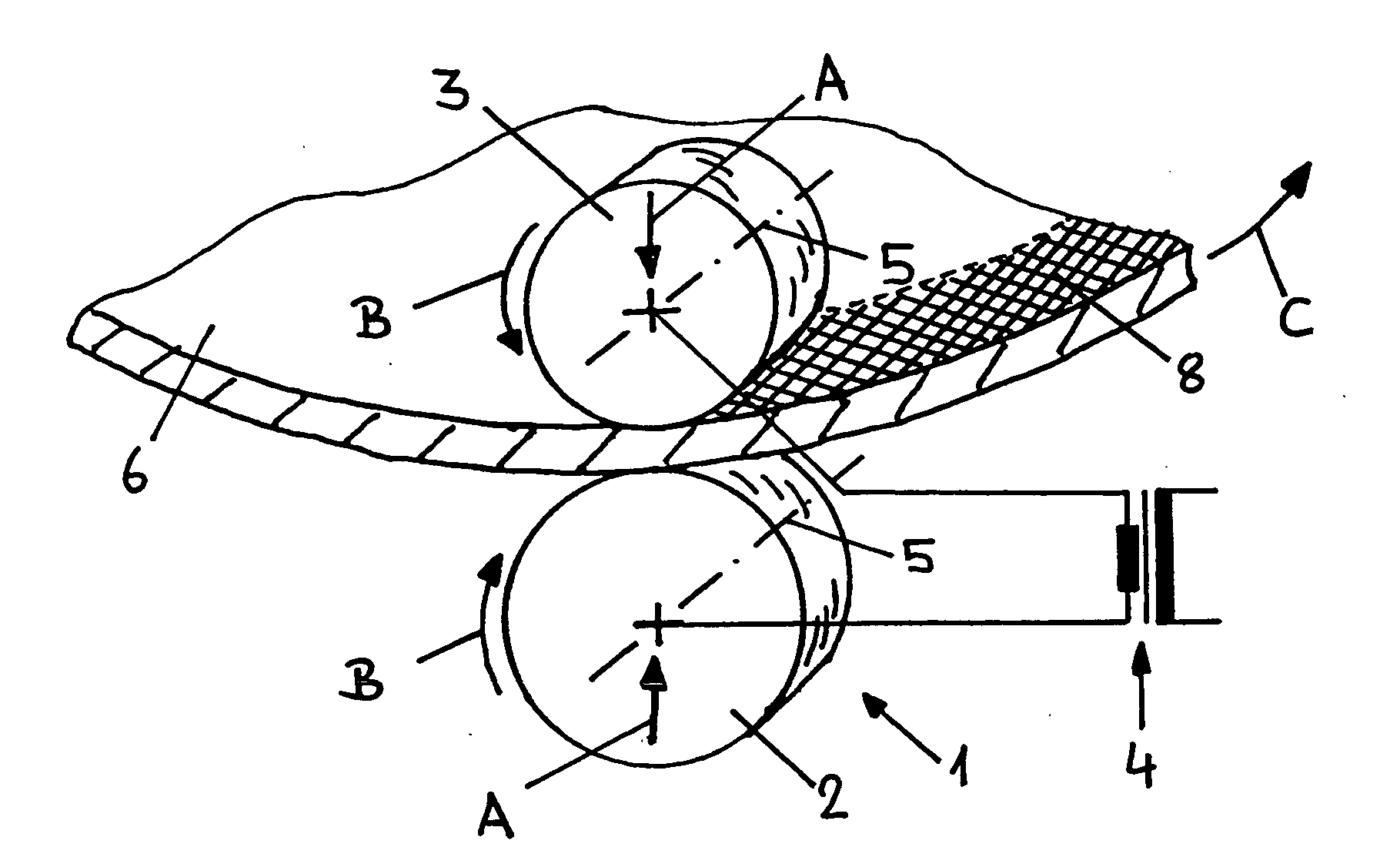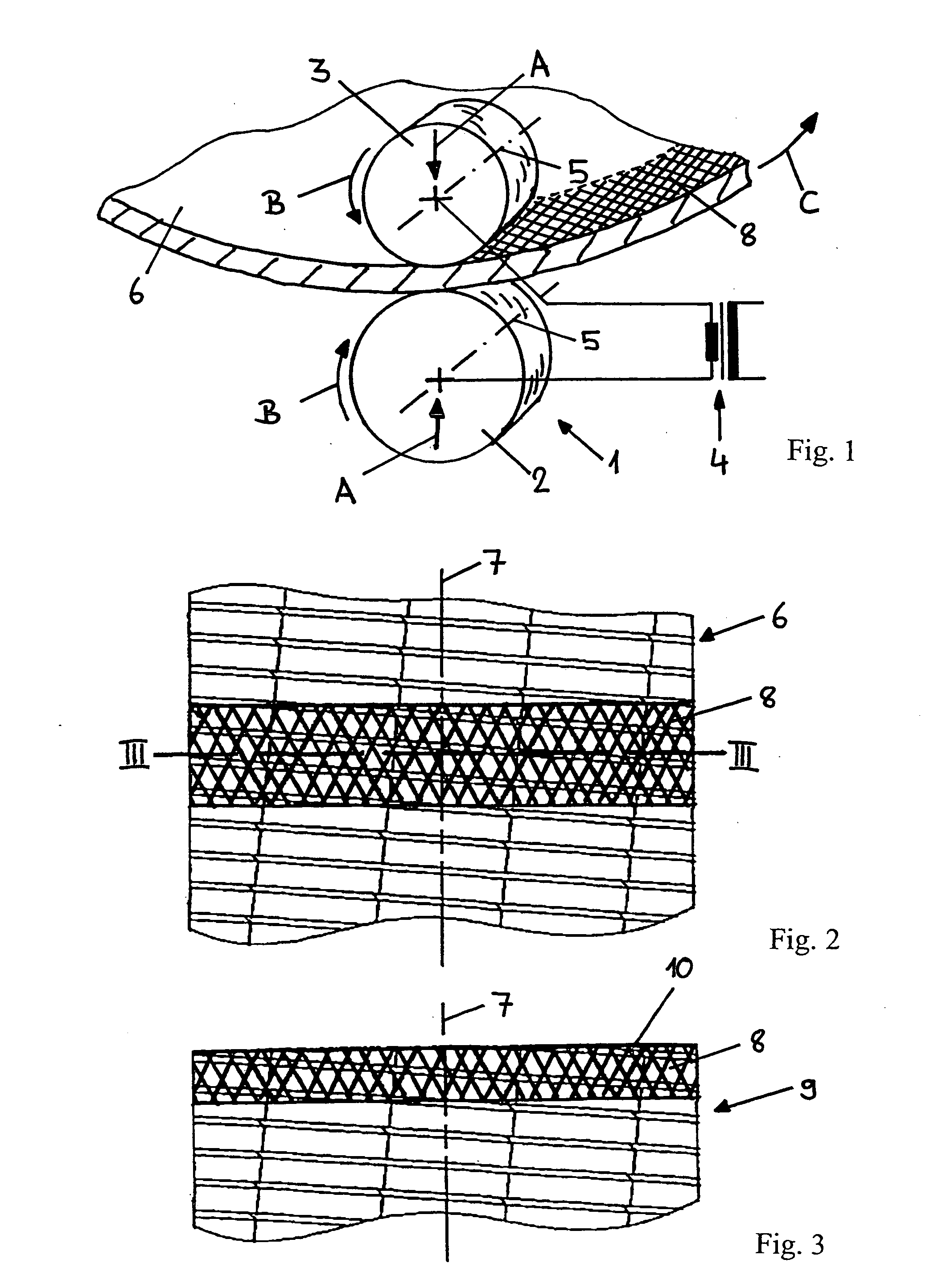Method for producing connecting ends on metal tubes and tube piece comprising such connecting ends
a technology of metal tubes and connecting ends, which is applied in the direction of resistance welding apparatus, curved planar seam welding, application, etc., can solve the problems of inability to further process and reject, and the fixing of burst-open metal layers in the region of burst-open connecting ends is, in particular, not practicable, and requires relatively expensive tools. , to achieve the effect of safe and effective tube welding, safe preventing tearing of the tube piece, and large width
- Summary
- Abstract
- Description
- Claims
- Application Information
AI Technical Summary
Benefits of technology
Problems solved by technology
Method used
Image
Examples
Embodiment Construction
[0030]FIG. 1 shows a schematic view of a seam welding device 1. The device 1 comprises two welding electrodes 2, 3 which are designed as cylinders or rollers and are each loaded with an electric voltage using a welding transformer 4. The welding electrodes 2, 3 are disposed at a mutual separation, and the workpieces which are to be welded together are introduced into the gap provided between the electrodes 2, 3. The electrodes 2, 3 can be loaded in a normal direction with respect to each other (see arrows A) to provide the pressing force required during the welding process. The electrodes 2, 3, which are designed as rollers, are rotatably disposed on their longitudinal central axis 5 and can rotate opposite to each other in the direction of the arrows B. The width of the welding electrodes 2, 3 and of the welding seam which can be produced thereby is e.g. approximately 6 mm.
[0031] In the situation shown in FIG. 1, a metal tube 6 comprising several metal layers (not shown) is insert...
PUM
| Property | Measurement | Unit |
|---|---|---|
| width | aaaaa | aaaaa |
| width | aaaaa | aaaaa |
| width | aaaaa | aaaaa |
Abstract
Description
Claims
Application Information
 Login to View More
Login to View More - R&D
- Intellectual Property
- Life Sciences
- Materials
- Tech Scout
- Unparalleled Data Quality
- Higher Quality Content
- 60% Fewer Hallucinations
Browse by: Latest US Patents, China's latest patents, Technical Efficacy Thesaurus, Application Domain, Technology Topic, Popular Technical Reports.
© 2025 PatSnap. All rights reserved.Legal|Privacy policy|Modern Slavery Act Transparency Statement|Sitemap|About US| Contact US: help@patsnap.com


